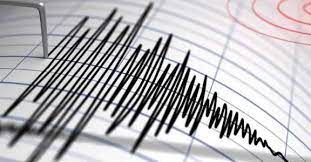Kathmandu. At least six people were killed when a house that was hit by a 6.3-magnitude earthquake collapsed in Nepal’s Doti district in the early hours of Wednesday. Strong tremors of earthquake were also felt in Delhi and surrounding areas at around 2 pm on Wednesday night. According to the National Center for Seismology, the depth of the earthquake was 10 km below the ground. The National Center for Seismology (NCS) has located 90 km from Pithoragarh in Uttarakhand bordering Nepal. The epicenter of the earthquake is said to be in the southeast. On Wednesday, the second earthquake occurred in Nepal within 24 hours.
The NCS also informed that on Tuesday morning, an earthquake of magnitude 4.5 had hit the country. According to NCS data, the last earthquake was 155 km from Kathmandu. 100 km to the North East. came to the depths of. Earlier on October 19, an earthquake of 5.1 magnitude hit Kathmandu. According to the National Earthquake Monitoring and Research Center (NEMRC), 147 km from Kathmandu on July 31. A 6.0-magnitude earthquake struck near Martim Birta in distant Khotang district. Earlier in 2015, a high-intensity earthquake measuring 7.8 on the Richter scale struck central Nepal between its capital Kathmandu and the city of Pokhara. It is estimated that 8,964 people were killed and 22,000 were injured.
This earthquake is known as Gorkha earthquake. He too shook many cities of North India. Tremors were also felt in Lahore, Pakistan, Lhasa in Tibet and Dhaka in Bangladesh. The recent earthquakes in Nepal have caused unprecedented damage to life and property and have necessitated well-planned policy measures to deal with such disasters. In 1934, Nepal had to face the worst earthquake. Its intensity was 8.0 on the Richter scale. It destroyed the cities of Kathmandu, Bhaktapur and Patan. It has been reported that the Indian plate is 5 cm below the Eurasian plate. per annum rate. It is responsible for the formation and increasing height of the young mountains of the Himalayas. It also increases the risk of earthquakes in the region. Disasters like earthquakes can wreak havoc if there is no necessary preparedness for rescue.
 Indian Thought Latest News & Views
Indian Thought Latest News & Views



